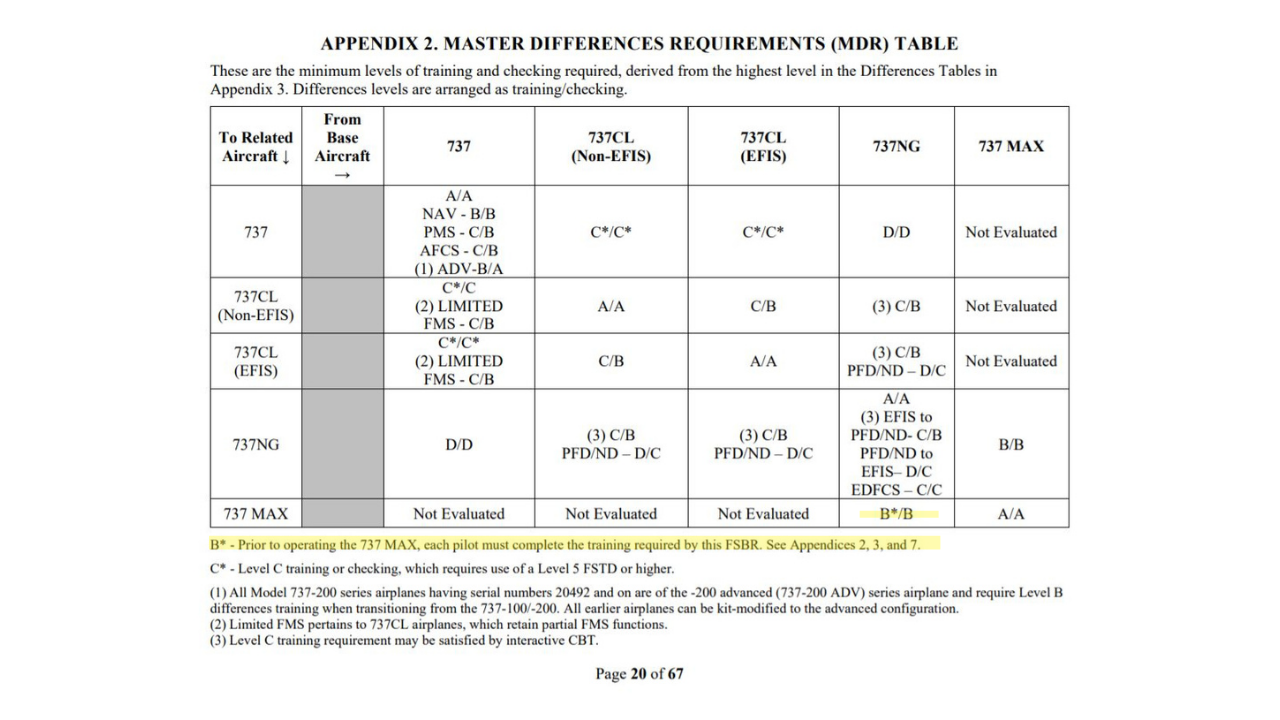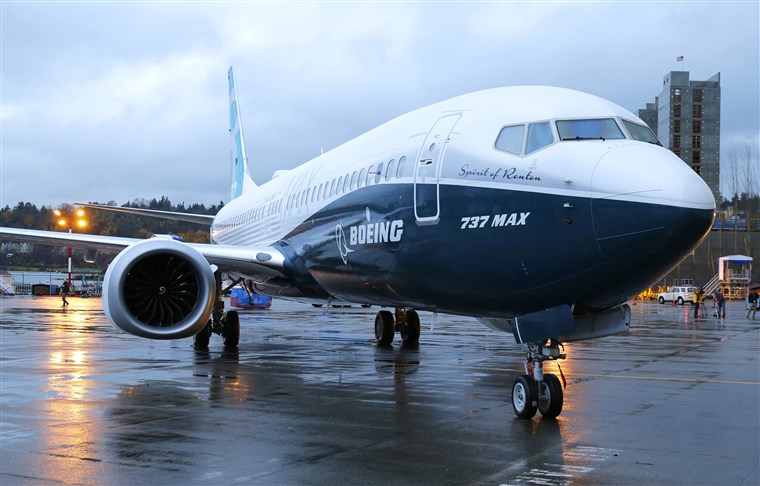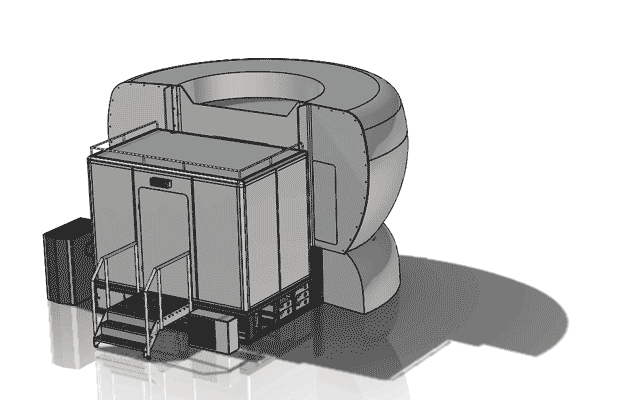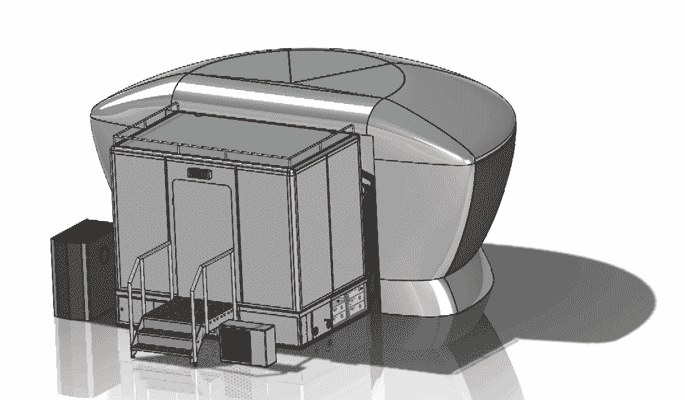After significant work done by Boeing and a review performed by global regulators under the lead authority of the FAA, the latest draft of the Flight Standardization Board (FSB) report was published yesterday evening. It can be found here: https://www.faa.gov/aircraft/draft_docs/media/afx/FSBR_B737_Rev_17_Draft.pdf
In this blog I will address what this means for the Return To Service (RTS) of the MAX and for the training needs.
First, let’s look at the remaining steps in the RTS efforts: Design changes have to be approved by FAA and other regulators, the grounding has to be lifted, all airplanes will have to be refitted with the changes and receive their individual Certificate of Airworthiness (COA) again. In addition, maintenance and flight crews will have to be trained to understand how to maintain or use the changed items of the revised design.
For flight crews, the required training is identified via the FSB report or under the EASA requirements the Operational Suitability Data (OSD) report. These reports set the minimum standards that need to be met for pilots to have the B737 Type Rating endorsement on their license. As the MAX is considered the same Type Rating as its predecessor, the B737 NG, there will be many paths for such qualification. In this post, I will address the shortest way possible which is the Differences Training for Pilots transitioning from B737 NG to B737 MAX.
In the FSB (and OSD) reports there is a Master Differences Requirement (MDR) table which identifies the training level at which the training needs to be performed. This table is located on page 20 of the draft report and is a roll-up of individual items (differences between the NG and MAX) which need to be trained at a certain training level to meet the minimum training standards.

A lot goes into this MDR table but important for us at this point in time is to understand what it means. Therefore, I will generalize the impact, but for more or deeper information, I would like to refer you to my speech at EATS 2019.
Video provided by Halldale Group. www.halldale.com
Let us look at the important training levels and what they mean in this aspect:
The original Boeing intent for the MAX introduction was to limit the design differences with the NG to training level B so that current operators and their pilots would not have to undergo any device training. Level B is identified as follows in FAA AC 120-53B:
Level B Training. Level B training applies to related aircraft with system or procedure differences that can adequately be addressed through aided instruction. At level B, aided instruction is appropriate to ensure pilot understanding, emphasize issues, provide a standardized method of presenting material, or aid retention of material following training. Level B aided instruction can utilize audiovisual presentations, computer-based tutorial instruction, or stand-up lectures.
Contrary to the standard processes of the abovementioned AC, in the revised and just published draft, the FAA and Boeing have not changed the training level in the MDR table to address the complexity of the systems as well as the crew impact but have instead chosen a strange intermediate solution, where simulator training is required in accordance with appendix 7 of the draft report, but this is not identified in the Master Differences Table. A much more logical solution would have been to change the training requirement to level D.
This is what the AC states regarding level D training:
Level D Training. Level D training applies to related aircraft having full task differences of knowledge, skills, and/or abilities. Level D training can only be accomplished with devices capable of performing flight maneuvers in a dynamic real-time environment. The devices enable integration of knowledge, skills, and abilities in a simulated flight environment, involving combinations of operationally oriented tasks and realistic task loading for each relevant phase of flight. Level D training requires mastery of interrelated skills that cannot be adequately addressed by separate acquisition of those skills. However, the differences are not so significant that a full transition training course is required. Training for level D differences requires a training device that has accurate, high-fidelity integration of systems and controls, and realistic instrument indications. Level D training may also require maneuvers, visual cues, motion cues, dynamics, control loading, or specific environmental conditions. Weather phenomenon such as low visibility, CAT III, or windshear may or may not be incorporated. Where simplified or generic characteristics of an aircraft type are used in devices to satisfy difference level D training, significant negative training must not occur as a result of the simplification. Typically, the minimum acceptable training method for level D training would be FTD level 6.
Besides meeting significantly higher training objectives, other interesting items in this paragraph are the highlighted issues.
The first thing to notice is that this talks about full task differences that require mastery of interrelated skills. In layman’s terms, you cannot achieve this result by studying alone and “simple” system knowledge does not suffice. You must master many items at the same time and in the MAX’s MCAS case these include but are not limited to the normal and non-normal procedures, memory items and possibly conflicting cockpit information to deal with.
I believe we all see the need to perform this training in a simulator but that is the additional point I want to make. Contrary to popular belief (fed in part by confusion between this “level D training” and a “Level D training device”, i.e. an FFS), the simulator used for level D training does NOT have to be an FFS but as highlighted above, can be a suitably equipped FAA level 6 (EASA equivalent would be an FTD-2 with FNPT-II qualification) such as the MPS MAX Fixed Base.
The solution that is proposed in appendix 7 of the draft report is a strange combination of training in a B737 NG and Boeing 737 MAX FFS. Another option would be to allow high quality training in a device that actually reflects the airplane that the crew is being trained for. Let us look at the items that need to be trained as proposed below.
These items have been copied and pasted directly from the draft report:
2.1 Demonstration of MCAS activation for each pilot.
2.1.1 MCAS activation during an impending stall (or full stall) and recovery demonstration during manual flight in a clean configuration.
2.1.2 Demonstrate MCAS activation stabilizer trim responses:
- Stabilizer trim in the nose down direction when above threshold AOA for MCAS activation during stall.
- Stabilizer trim in the nose up direction when below threshold AOA for MCAS activation during recovery.
2.2 A runaway stabilizer condition that requires the pilots to use manual stabilizer trim.
2.2.1 Runaway stabilizer training as described in subparagraph 9.2.2.5 must be completed by each pilot acting as PF.
2.2.2 Operation of each manual trim technique (as defined by Boeing) must be completed by each pilot acting as PF.
2.2.3 This training can be completed in a 737 MAX or 737NG FFS.
2.3 Use of manual stabilizer trim during approach, go-around, and level off.
2.3.1 Use of manual stabilizer trim as described in subparagraph 9.2.2.4 must be completed by each pilot acting as PF.
2.3.2 This training can be completed in a 737 MAX or 737NG FFS.
2.4 A Cross-FCC Trim Monitor activation demonstration accomplished by either pilot acting as PF.
2.4.1 Condition must terminate in a landing in order to demonstrate the updated STAB OUT OF TRIM light functionality.
2.5 Erroneous high AOA on takeoff that leads to an unreliable airspeed condition accomplished by either pilot acting as PF.
2.5.1 Demonstrates flight deck effects (i.e. aural, visual, and tactile) associated with the failure.
2.5.2 Fault occurring during the takeoff procedure.
2.5.3 Must include a go-around or missed approach flown with erroneous high AOA condition.
2.5.3.1 Special emphasis placed on FD behavior biasing out of view upon selecting takeoff/go-around (TO/GA).
All identified training items in italics above are either a demonstration or require the use of manual trim, items that are the same in both Fixed Base and FFS devices.
The FAA’s proposal to perform differences flight training in a Full Flight simulator could be a large burden on every organization and pilot that needs to re-certify, especially in the current situation our industry is in. Cost efficiency is more important than ever before as organizations struggle to keep pilots working and travel is not only risky but also still very restricted across the globe yet it is often required for training in a full motion device. Airlines are losing millions of dollars each day and need more flexible training options that address both issues of cost and travel. Level D training could provide organizations with other options and more cost-effective solutions.
In addition, providing level D training on a MAX specific device is extremely important so that pilots feel comfortable in their actual working environment as they regain confidence in the MAX after all that has occurred.
It is important to remember that the FSB report is still a draft and has not been set in motion yet. Changes can (and likely will) still be made and as I mentioned earlier, the path to requalification is not singular. We will engage with the FAA and other global regulators to address issues of cost and travel and will encourage them to consider Fixed Base simulators for differences training. Fixed Base devices have developed into full-fledged, but not full-flight, simulator training devices which are more than capable to meet their, and your, training needs. We understand that a desire for this exists in order to keep costs and travel to a minimum during these challenging times and moving toward the future of our industry.
In this blog, I have focused on discussing the proposed means for differences training but let us not forget that an important role exists for Fixed Base devices in Type Rating and other airplane specific training. Keeping this all in mind, when you introduce the MAX into your fleet or regulatory oversight area, consider us for your training. MPS works very hard to create the highest quality training devices that meet and exceed all training standards. We can provide you with a local device with “all the bells and whistles” for your crews to regain their competency and qualification and stand ready to support.
The comment period of this draft FSB report closes on November 2nd, 2020. I will follow up with a blog focused on changes to the FSB as well as explaining the other regulatory guidance such as the EASA OSD report that may be released in the meantime.


